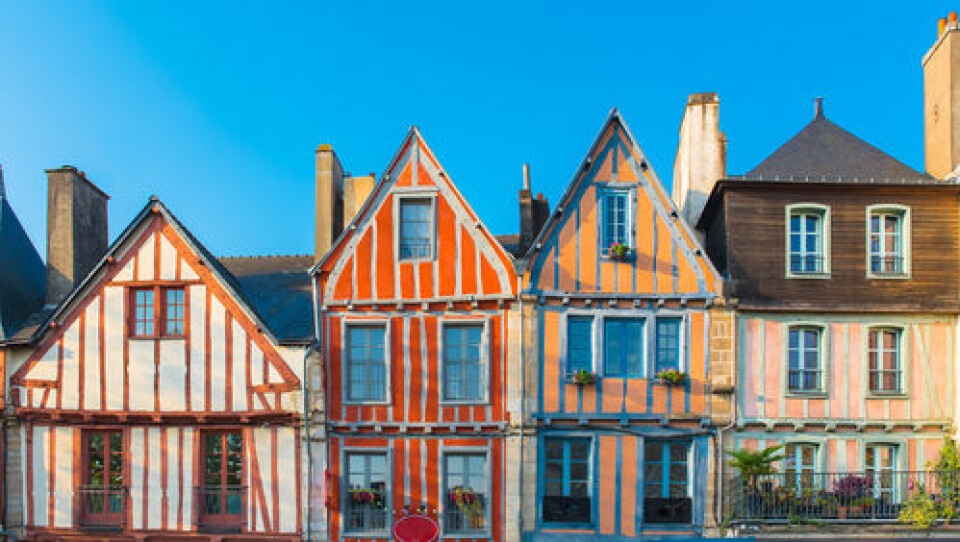-
Know your cheeses and their seasons: which to eat in France in April
A wide selection of fresh cheeses are available this month
-
Main ski stations in French Pyrenees now closed - but five remain open
Busy Christmas period saw stations receive more skiers than previous year
-
French people reveal their favourite dishes - what is yours?
Confit de canard, bouillabaisse, snails, crêpes, cassoulet…plus, how do you choose a restaurant?
How Covid changed where people live and work in France
Brittany, Corsica, Nouvelle-Aquitaine and Occitanie were among the most popular destinations as people moved out from major French cities

A new report has shed light on the extent to which the 2020-2022 Covid period altered where people choose to live and work in France.
The dossier, produced by the national statistics bureau Insee (Institut national de la statistique et des études économiques), used a variety of data sources to build a picture, including surveys, postal address forwarding data and address changes with tax or vehicle registration authorities.
Here are some of the key trends.
More people moving away from major towns and cities
The biggest trend saw people moving away from major urban centres, towards other regions that have always been popular, but not always within reach for working people.
Insee said: “Several indicators…show an acceleration of movement towards regions that were already attractive in the past.”
It said that the most popular areas were on the Atlantic coast and in the south, while data showed that by 2022, there were more departures away from Ile-de-France, Grand Est, and Hauts-de-France than in previous years.
Brittany was still the most attractive region, it said, with twice as many arrivals than departures in 2021. This was followed by Corsica, Nouvelle-Aquitaine, and Occitanie.
Read also: Coastal boom, inflation: Six French property trends from notaire data
In contrast, there were more departures from Ile-de-France than arrivals.
The data “suggests changes in behaviour” that differ from usual movements, according to the report.
It stated: “The centres of large metropolises and the Paris area, already dropping [in popularity] before the pandemic compared to their surrounding areas, were even less popular after 2020.”
"While many of these movements are the result of residential choices linked to the traditionally-observed life cycle (retirement, entry into higher education), the intensification of the trends may suggest changes in behaviour.”
Smaller towns more popular
The data shows that towns with populations between 50,000-200,000 grew in popularity.
The departure-arrival ratio -- according to postal forwarding contracts -- rose from 1.19 in 2019 to 1.28 in 2022, meaning that more people were arriving than leaving.
The report highlights the case of Colmar (Grand Est) and Vannes (Brittany), which, in 2021, had 122 and 110 transfers of postal addresses towards them respectively, against 100 transfers away.
Read also: Small towns escape price rise slowdown: French property market trends
Changing relationship between home and workplace
Insee said many of the changes were “without a doubt” linked to the new possibilities offered by the rise in working-from-home practices.
It said that its data sources showed that a correlation could be established between working people’s profiles and their tendency to have changed residential areas.
It said that in “departments where jobs appear more compatible with working from home”, the ratio of arrivals and departures suggests that there was a “link” between working from home and residential moves away from major cities.
Similarly, commuting distances also show a change.
The distance travelled by employees furthest from their workplace increased sharply (+14%) for people with working-from-home jobs.
Working families especially moving further out
The trend to move away from cities is also particularly apparent among working people with young children.
The data shows that “in the centres of Paris and large areas” the drop in the number of pupils shown as enrolled in primary education was “more pronounced than in previous years”, and that “in other large metropolises too, urban centres are becoming less attractive than the suburbs (a drop of 1.6%) in 2021 compared to 2019.
Related articles
‘Slowdown ahead’: Five French property trends from latest notaire data
Seven property trends highlighted by latest French notaire data
























